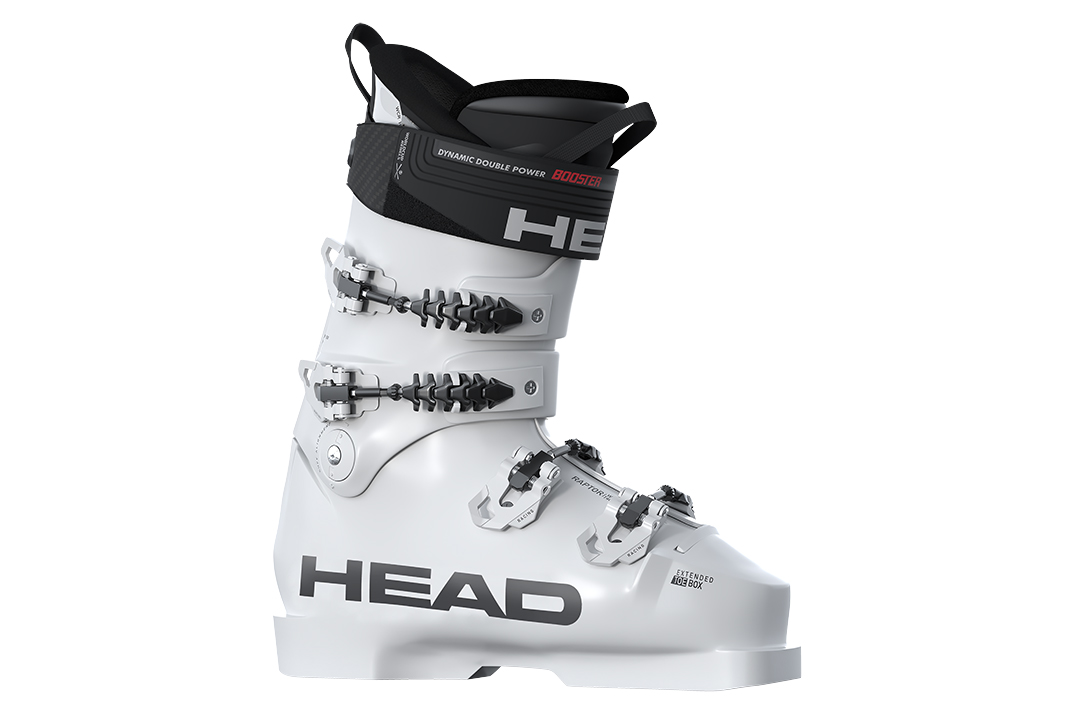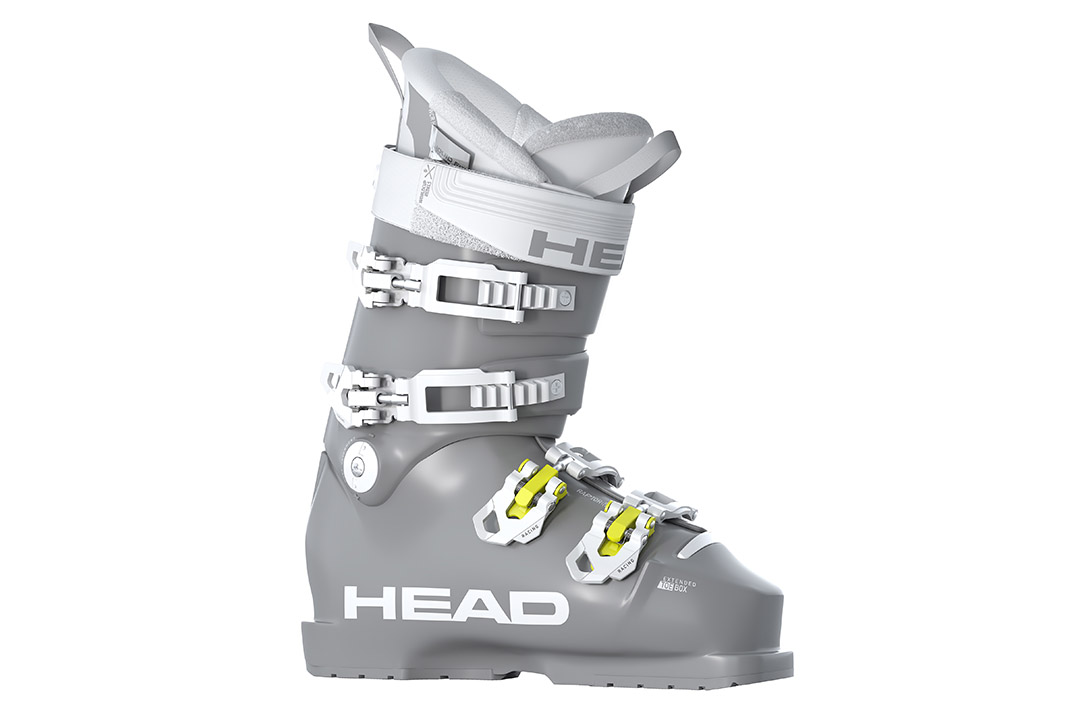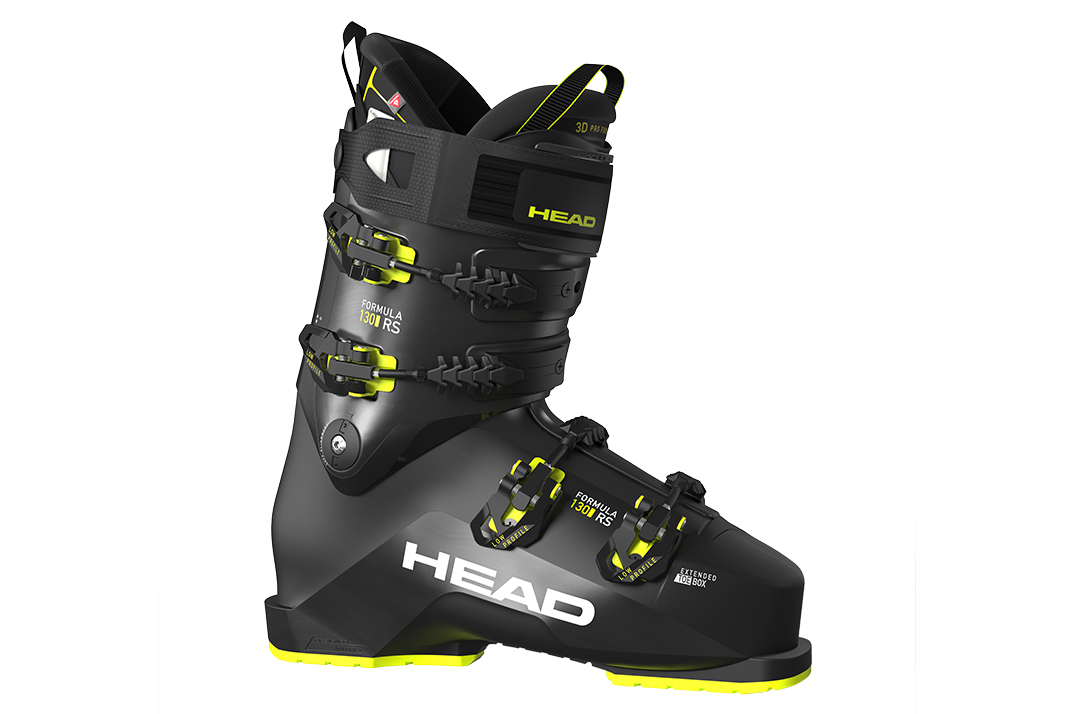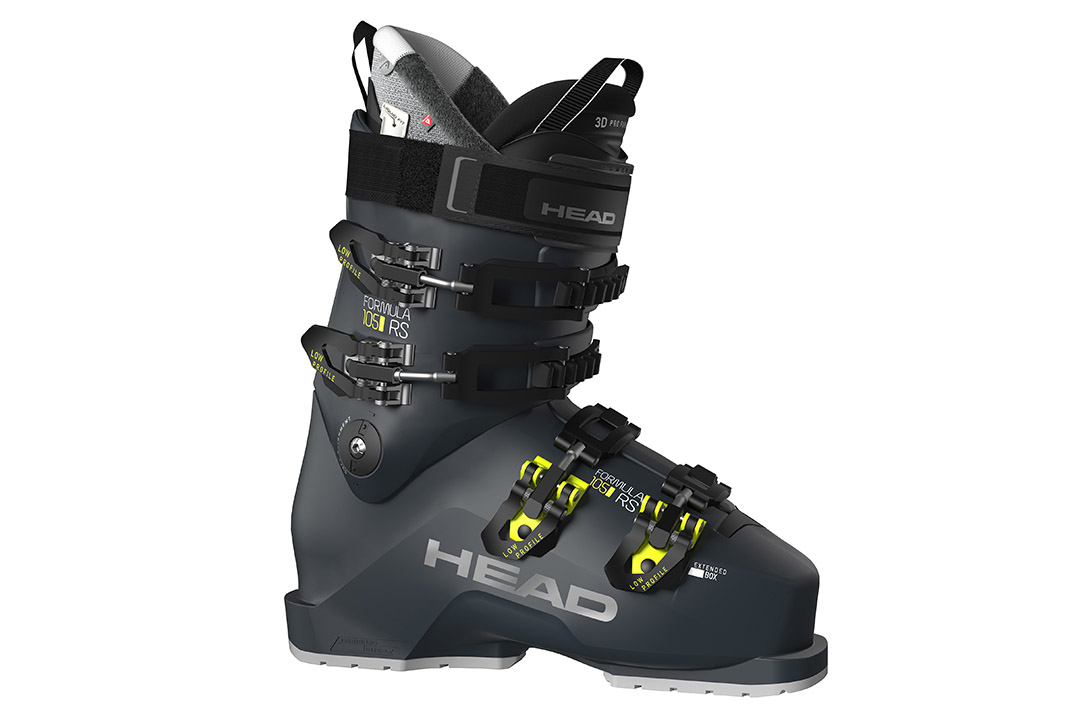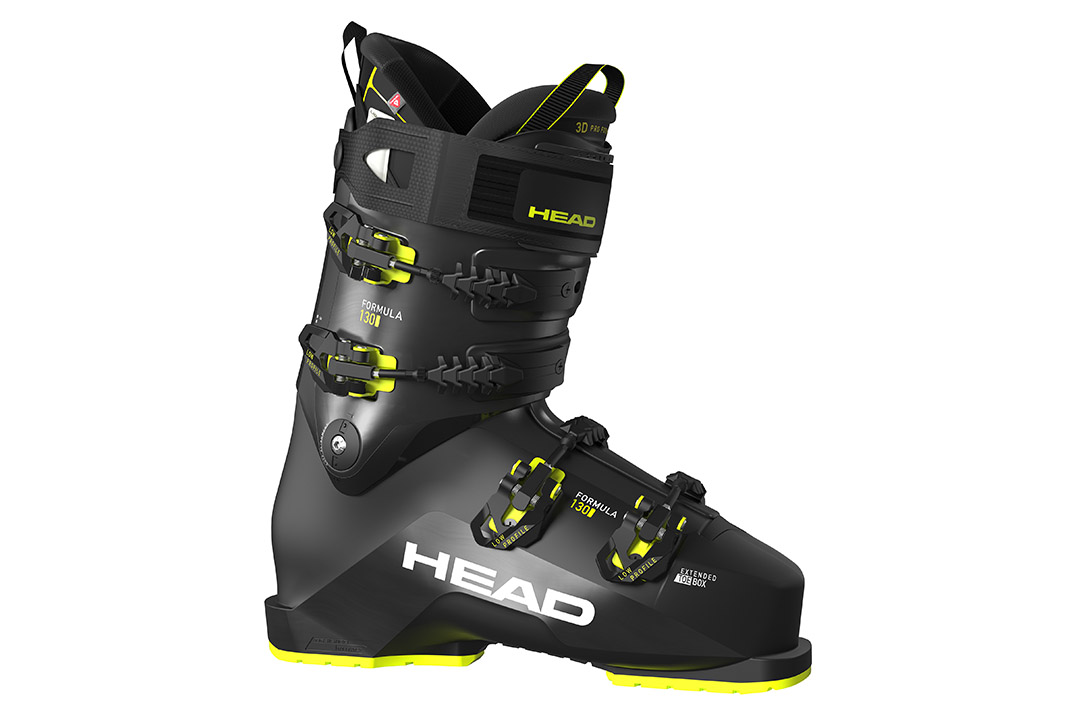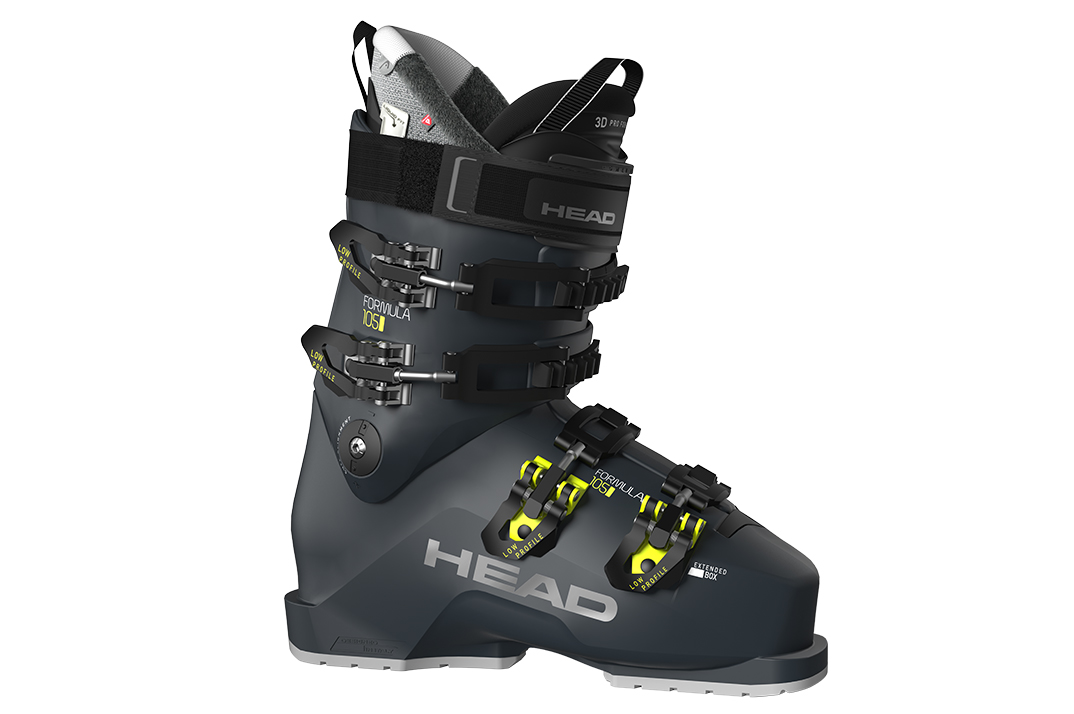Over most of Head’s storied history as a ski brand, lighter weight hasn’t exactly been top of mind. They’ve been better known for building battleships as opposed to skiffs. Two pivotal shifts, one global and one local, have made lightweight design a priority, if not the priority, at Head today. The global trend is to make all consumer goods lighter, across all categories, a phenomenon we refer to as Lighter is Better, or LIB. The local event was Head’s license to use Graphene, first manifest in its ski line with the debut of the women’s Joy series several years ago.
Graphene, which is carbon in a one-atom thick matrix, was bound to find its way into Head boots, as indeed it has with Nexo Lyt, the most thoroughly transformed of the new generation of lighter weight shells. By “transformed,” I mean not just dependent on material change to deliver improved behavior, or even to expect lighter mass to be of sufficient benefit by itself, but using lighter materials as an opportunity to change how a seemingly conventional boot (i.e., 4-buckle overlap, standard 4o/14o stance angles) reads and interacts with the snow.
If the new wave of lightweight shells is to bridge the gap between novelty and necessity, it will be because of designs like Nexo Lyt. The Graphene-infused Smart Frame shell is sculpted so it can absorb shock (to some degree) and generate rebound (to a greater degree). The sensation of snow feel is as intimate as wearing a moccasin. The quickness to the edge is fencer fast.
The 100mm (medium) last of the current Nexo Lyt is close fitting out of the box, which is essential to its quickness and accuracy. If the fit around the heel and ankle should relax over time, a viscous fluid, called Liquid Fit, can be injected into an internal pouch that circumnavigates this area. Head doesn’t promote Liquid Fit as a point of sale necessity but a fit-refreshing technology. Able to be extracted as well as injected, Liquid Fit is a nifty fit option that will prove beneficial to all skier abilities. In 2022, Liquid Fit will be standard across Head’s boot collection, including the new Raptor WCR, Formula RS and Formula series.
If any other shell or liner modifications (“mods” in bootfitter patois) are required, all the Lyt shells are easily heat-moldable. Another option is the substitution of rockered, Gripwalk soles, which you’ll be thankful for the next time you face a long parking lot traverse.
Now that Head is comfortably LIB-centric, it has brought its collective imagination to bear on two categories where lightness has always counted, backcountry and women’s boots. Even though BC boots belong to a genre I rarely visit, curiosity compelled me to essay the Kore 1 when it debuted. Despite its extraordinarily featherweight design and relatively soft flex (in a 130), it remained supportive when I drove into it. Its quickness to the edge rivals that of any recreational Alpine boot.
Head’s women’s boot collection definitely benefits from the trans-gender (old-fashioned meaning) focus on lighter weight. For 2022, women have a choice of Nexo Lyt (100mm) or Edge Lyt (102mm) shells in an assortment of flexes. (The 98mm Nexo Lyt has been discontinued to make way for the new Formula RS W models.) All women’s boots come equipped with Form Fit moldable shells, adjustable cuff aperture and Liquid Fit liners that are of particular value to women with low-volume feet who don’t want to absorb the shock of an injected inner boot’s price tag. Last season saw the debut of the women-specific Kore 2 W, invested with the same fit and performance features as Nexo Lyt, adapted for backcountry skiing.
As an Austrian brand, Head is ultra-focused on winning World Cup races, an intensity that may have even gone up a notch since Head’s hands-on owner, Johan Eliasch, was recently elected president of FIS, Alpine racing’s governing body. Head’s Raptor series of no-holds-barred race boots has a well-deserved reputation for brute power that may have hindered its appeal to comfort-loving Americans.
For 2022, Head has re-built its Raptor series inside and out, and extended its virtues to a new batch of nearly-race boots called Formula. Both the Raptors and Formulas boast a bevy of new features, including an extended toe box, a new cuff alignment that’s more precise and stable, and re-positioned buckles on the lower shell that won’t snag the snow at maximum angulation. Racers will appreciate the Raptor WCR’s more upright (9o) stance, and boot technicians will like the new WCR boot board because it has no varus correction that has to be ground away.
The new Formula boots come in two lasts, 98mm for the Formula RS series, and 100mm for the Formula series. Both use a new, damper PU formula derived from Head’s Raptor research that has a more gradual flex and measured rebound. Both the Raptors and Formula models are ready to receive Liquid Fit, Head’s clever, injected goo that fills a pocket around the heel and ankle as needed to deliver a firm grip in this critical area.
One detail that I find instructive is that neither the Raptor WCR’s nor any of the Formula models come mounted with Gripwalk soles. The top Raptors, the WCR 140S and 140S Pro, use monoblock shells with no tread to speak of, and the remaining Raptors and all the Formula and Formula S models come with a flat, thin, lightly treaded sole that can be replaced with Gripwalk if so desired. That Head pre-mounts a flat, non-Gripwalk sole reveals what Head believes performance skiers should use. The message seems to be, there’s not much point in making boots with this degree of power and precision only to muffle their accuracy with a squishy dome under the ball of the foot.

